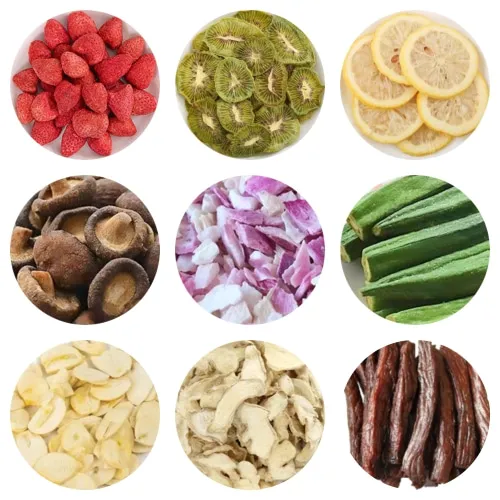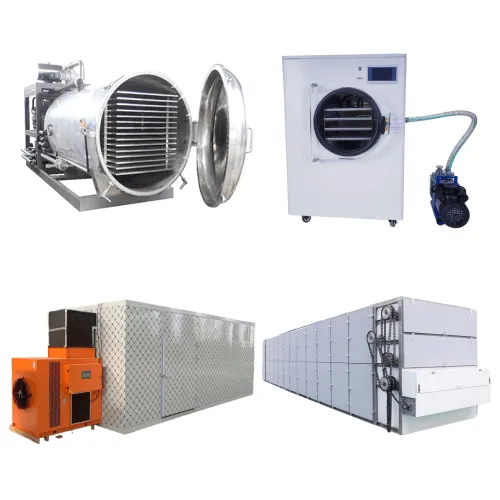Key Characteristics of Dehydrator-Friendly Peppers
The best peppers for dehydrating combine thin walls, low moisture content, and intense flavor—ensuring efficient drying and robust results.
Selecting the right peppers for your dehydrator goes beyond heat levels; it’s about how their physical traits impact the drying process. Here’s what truly matters when choosing peppers for dehydration.
Why Thickness Matters
- Thin-walled peppers (like cayenne or Thai chilies) dry faster and more evenly.
- Thick-walled varieties (such as bell peppers) need extended drying times and risk developing spoilage spots.
- For consistent results without over-drying, aim for 1-2mm thickness.
Moisture Content: The Silent Player
- Low-moisture peppers (habaneros, serranos) preserve more flavor during dehydration.
- High-water content peppers (poblanos, Anaheims) shrink significantly and lose texture.
- Pro tip: A waxy skin often signals lower internal moisture—ideal for dehydrating peppers.
Maximizing Flavor Retention
- Capsaicin (the heat compound) intensifies during drying—opt for slightly milder peppers than you’d expect.
- Sugar-rich varieties (like cherry bombs) develop a subtle caramelized note.
- For vibrant color retention, dry quickly at moderate temps (125-135°F).
The Quick Test Before Committing
Before dehydrating a full batch, try a small sample. Perfectly dried peppers should snap crisply—no flexibility or damp spots. If they bend instead of break, they either need more time or aren’t the best candidates for dehydration.
Now that you know what makes peppers dehydrator-friendly, let’s explore which specific varieties deliver outstanding dried results.
Top Pepper Varieties for Dehydrating
Jalapeños, cayenne, habaneros, and chili peppers are the best choices for dehydrating due to their ideal moisture balance, strong flavor retention, and versatility in dried form.
When selecting peppers for dehydration, look for three key traits: bold flavor, low excess moisture, and the ability to hold their shape during the drying process. Here’s why these varieties stand out for dehydrator drying methods.
Why These Peppers Excel:
- Jalapeños
- Moderate heat (2,500–8,000 SHU)
- Thick walls dry evenly at 125°F (52°C)
- Perfect for soups as dried slices or ground into powder
- Cayenne
- Thin flesh dries quickly (4–6 hours)
- High heat (30,000–50,000 SHU) intensifies when dried
- Great for hot sauces or spice blends
- Habaneros
- Fruity flavor becomes more pronounced when dehydrated
- Blanching before drying helps preserve vibrant color
- Use sparingly—dried heat reaches 100,000–350,000 SHU
- Chili Peppers (e.g., Ancho, Guajillo)
- Natural sweetness balances the heat
- A traditional choice for mole sauces
- Rehydrate whole for stews or grind into flakes
Pro Tip:
Avoid bell peppers for dehydrating—their high water content (92%) results in a leathery texture. If you prefer milder options, try waxier varieties like banana peppers.
Want to master the steps for drying peppers in a dehydrator? The next section covers optimal temperature settings and prep tricks to avoid common pitfalls.
Dehydrator vs. Other Drying Methods for Peppers
Dehydrators deliver faster, more consistent results than air-drying or oven methods while better preserving flavor and vibrant color—key for selecting peppers for dehydration.
Many home cooks struggle to choose the best drying method, but the ideal approach depends on your priorities: speed, quality, or convenience. Here’s how dehydrators compare to traditional techniques for drying peppers.
Why Dehydrators Excel for Pepper Preservation
- Speed: Dries peppers in 4–12 hours (vs. days for air-drying)
- Consistency: Even heat circulation prevents mold and uneven drying
- Control: Adjustable temperatures (95–155°F) protect delicate flavor compounds
- Capacity: Multiple trays handle bulk batches efficiently
When Traditional Methods Might Work
- Air-drying: Suitable for thin-skinned pepper varieties in dry climates but takes 2–4 weeks with higher mold risks
- Oven-drying: A quick fix, but with drawbacks:
- High temps (170°F+) can cook rather than dehydrate
- Energy-inefficient for prolonged use
- Uneven airflow leads to hot spots
Pro Tips for Drying Peppers in a Dehydrator
- Slice uniformly (¼" rings or strips) for even drying
- Remove seeds and membranes to speed up the process
- Use 125–135°F for sweet peppers, 145°F for chilies
- Rotate trays every 2 hours for consistent results
Want to perfect your prep work? The next section covers how to select and prepare the best peppers for dehydrating to ensure optimal flavor and texture.
Step-by-Step Dehydrating Guide for Perfect Peppers
To dehydrate peppers like a pro, start with fresh, high-quality peppers, slice them uniformly, and dry at 135°F (57°C) for 4-12 hours until crisp. This preserves their vibrant flavor and maximizes shelf life.
Drying peppers in a dehydrator locks in their natural taste while extending usability, but success depends on proper preparation and attention to detail. Here’s the foolproof method:
- Preparation
- Select ripe, unblemished peppers—thinner-walled varieties like jalapeños dry faster, while thicker peppers like bell peppers require more time.
- Wash thoroughly to remove dirt and residues, then pat dry with a clean towel to speed up dehydration.
- Slicing
- Cut into even ¼-inch (6mm) slices or rings for consistent drying.
- For milder flavor, remove seeds and membranes before slicing.
- Dehydrator Setup
- Arrange slices in a single layer with space between pieces for optimal airflow.
- Set temperature to 135°F (57°C). Avoid higher heat to prevent cooking instead of drying.
- Drying Time
- Thin peppers (e.g., cayenne) may dry in 4-6 hours; thicker varieties (e.g., poblano) can take 8-12 hours.
- Test for doneness: properly dehydrated peppers should snap crisply when bent.
- Storage
- Cool completely before storing in airtight containers, away from light and heat to maintain quality.
For even drying, rotate trays every 2 hours. Curious how dehydrated peppers can transform your dishes? The next section explores their culinary versatility.
Storage and Culinary Uses of Dehydrated Peppers
Properly stored dehydrated peppers retain their vibrant flavor for months and serve as versatile ingredients—use them as spices, rehydrate them in dishes, or grind them into powders for endless culinary creativity.
Dehydrated peppers are pantry staples that shine when stored correctly and used thoughtfully. Here’s how to extend their shelf life and unlock their full potential in your kitchen.
Storage: Preserving Freshness and Flavor
Air and moisture are the biggest threats. Follow these simple steps to keep your peppers crisp and flavorful:
- Cool completely after dehydrating (allow 1-2 hours). Warm peppers can retain residual moisture.
- Choose airtight containers: Opt for glass jars with silicone seals or vacuum-sealed bags for optimal protection.
- Include oxygen absorbers for long-term storage (6+ months).
- Label with dates: Most varieties maintain peak flavor for 8-12 months when stored in a dark, cool place.
Pro tip: For jalapeños or cayennes—some of the best peppers for dehydrating—freeze them for 48 hours before storage to eliminate potential insect eggs.
Culinary Uses: Beyond Basic Seasonings
Dehydrated peppers offer three primary ways to elevate your dishes:
| Form | How to Use | Best Pepper Varieties |
|---|---|---|
| Whole | Rehydrate in soups or stews (soak 20 mins in hot water) | Ancho, Pasilla |
| Flakes | Sprinkle over pizza, pasta, or salads | Cayenne, Habanero |
| Powder | Blend into rubs, marinades, or sauces | Chipotle, Smoked Paprika |
For faster rehydration, grind peppers into coarse flakes before soaking—they absorb liquid three times faster than whole pieces.
Curious about how different drying methods impact flavor? The next section compares dehydrator drying techniques with traditional air-drying for selecting peppers for dehydration.



